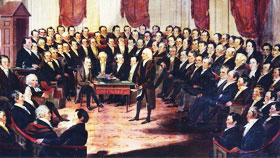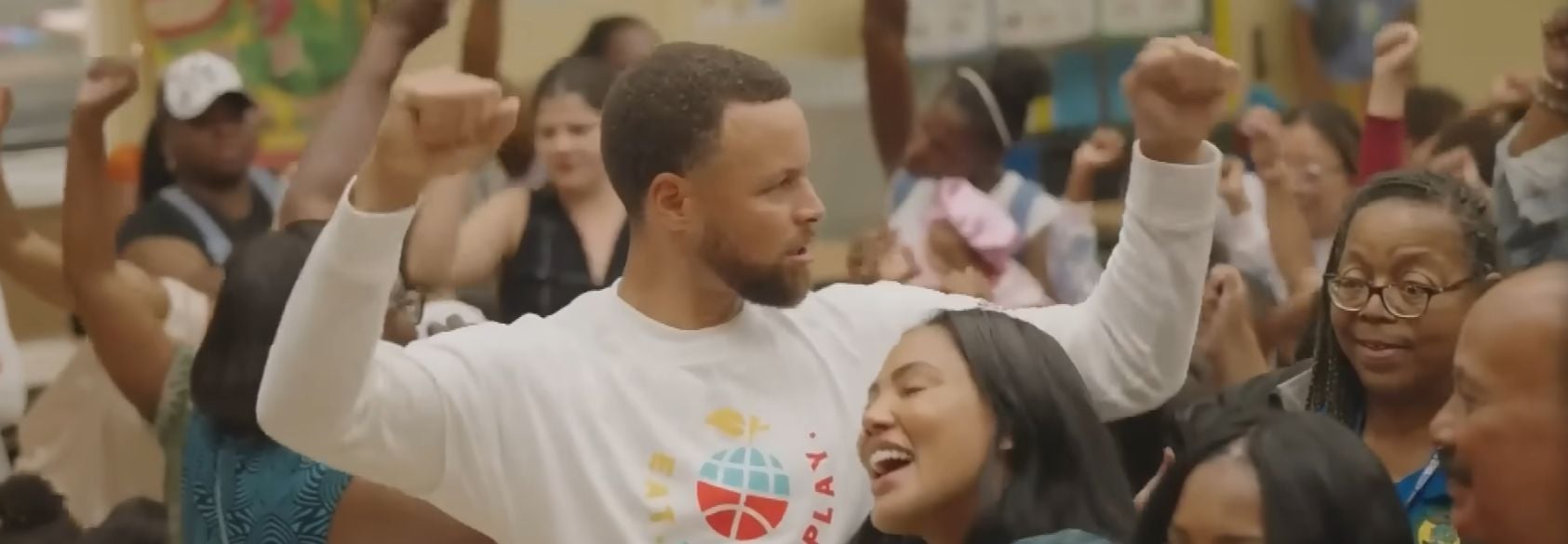Did police violate journalists’ constitutional rights to assemble, speak and make demands of those in power in Ferguson, Mo., following the shooting death of Michael Brown?
Does “forcing” states to comply with the implementation and assessment of the Common Core State Standards because vital monies are attached constitute unlawful coercion by President Obama, and thus a violation of constitutional rights?
Is Hobby Lobby protected by constitutional rights to opt out of providing birth control options for women as a part of its healthcare coverage?
These events fill Twitter feeds and Facebook posts, prompt individuals nationwide to write op-eds and fuel debates on the nightly news. In each case, “constitutional rights” are called in to question, which underscores the need for students to both celebrate and learn from Constitution Day on Sept. 17.
Interestingly, as a part of Robert Byrd’s Consolidated Appropriations Act of Fiscal Year 2005, Congress passed a provision requiring every school and college that receives federal money to teach about the Constitution on Sept. 17 each year, the day it was originally adopted in 1787. Some would argue that this very provision—an intrusion by the federal government—is unconstitutional.
When the Constitution is invoked, a strange paradox frequently emerges as individuals on both sides of the argument use the document as evidence to back their own position. Though wrought with frustration and confusion, events such as those mentioned above only highlight the need for a thorough study of this primary source that is at the center of both sides’ arguments.
As teachers prepare to teach about the Constitution, there is some concern that their curriculum does not have this lesson incorporated, and that its inclusion would disrupt the flow being established in the first few weeks of school. The subject matter, however, is worthwhile, and teachers have a treasure trove of “How does this relate to your own life?” conversations with students ahead of them, which will build community and rapport.
Share My Lesson’s Constitution Day resources are extensive. One of the coolest lessons I found is for grades 1 and 2. For whatever reason (probably because I have only taught on the secondary level), I couldn’t imagine how a worthwhile conversation and learning experience about the Constitution could take place with students this young. My son, Oliver, is in the first grade, and unless something is Star Wars-related, it doesn’t necessarily hold his attention for long. And, though we have many “good vs. evil” and “the dark side” conversations, I still wasn’t convinced that philosophically he could absorb the material about the Constitution.
However, Share My Lesson’s content partner, the Center for Civic Education, has an engaging and age-appropriate lesson called “Constitution Day Rap.” Students use their artistic talents to create a 13-star flag, while tapping into their intrinsic motivation as they perform the rap and have fun connecting with their peers—all developmentally necessary for fruitful learning. The teacher also has access to “Fun Facts” that can be incorporated throughout the lesson. And, as for my son, he’d like the art and music, as well as the trivia gleaned from the fun facts.”
Another content partner, the National Constitution Center, provides a current video lesson that addresses the legislative branch while also exploring important historic sites. This resource is designed for grades 5-9, although I expect that there is some content that also would be appropriate for older high school students. Perhaps it could be used as a review tool or as part of a special education plan that requires multiple methods of delivery for student success.
Without fail, the Constitution is going to be used in persuasive arguments for both sides of controversial issues, and it is a reasonable expectation that schools will instruct and guide students in pursuit of their own ideals. Ironically, the framers of the Constitution, who were deliberate to the point of contention at times, intentionally left matters of education out of the document.
We don’t tell students what to think, particularly about politics, but instead, we teach them how to think critically. As they read about the National Rifle Association and gun control; abuses of presidential power; United Nations arms trade treaties; Environmental Protection Act regulations; and National Security Agency phone surveillance programs, students need to think critically.
No matter which side you are “for” and which you are “against,” help students who will be our leaders in the coming decades. One way to do this is to help them become familiar with the U.S. Constitution—and the rights it provides.











